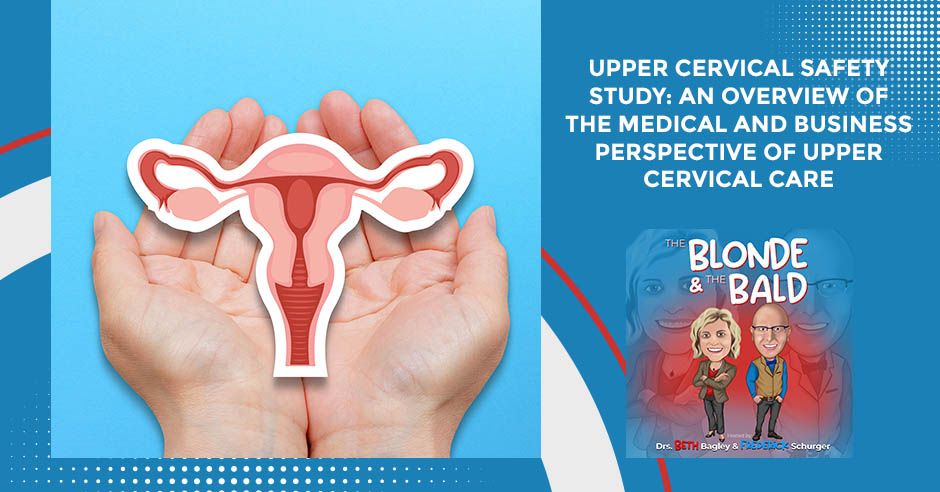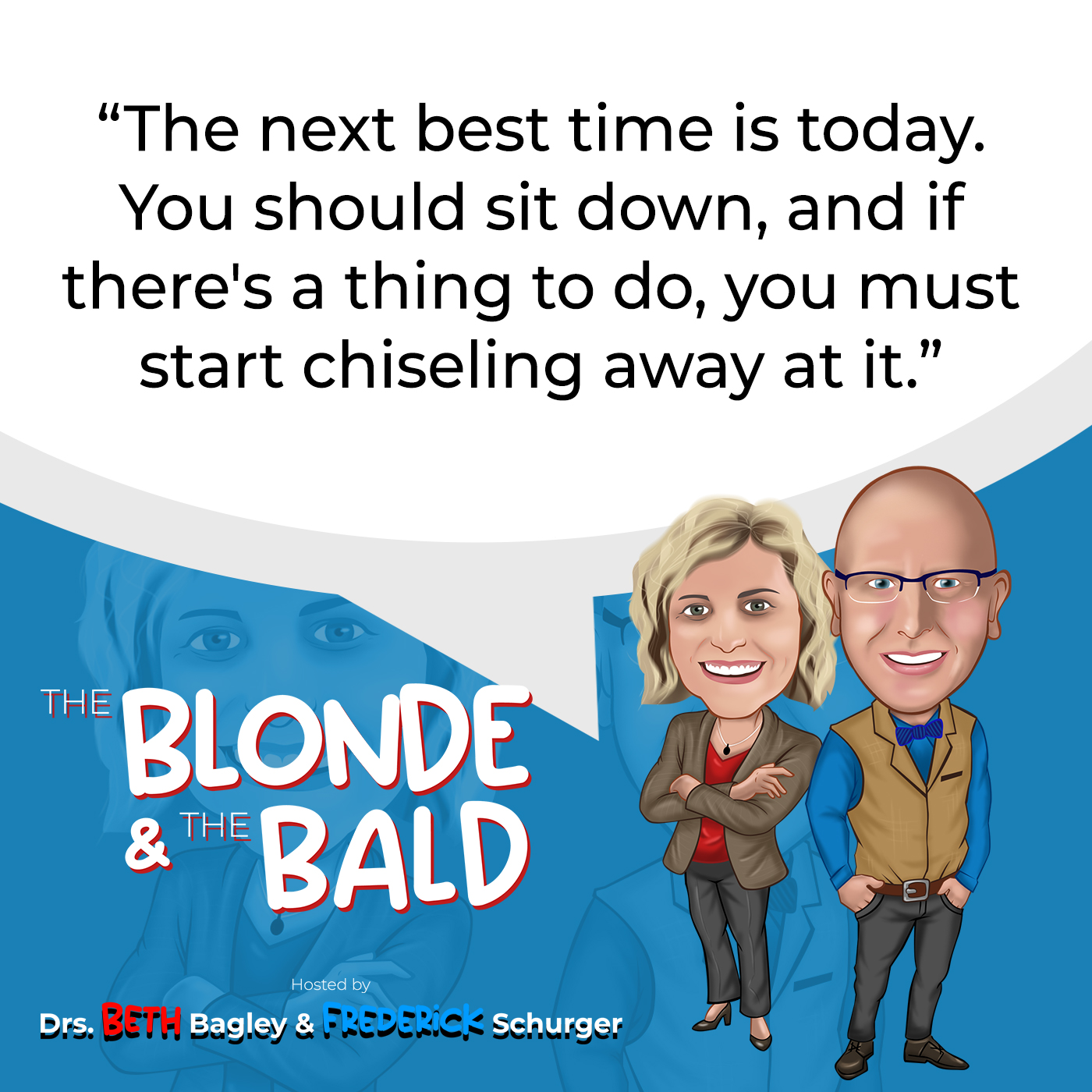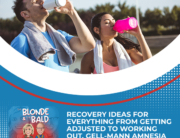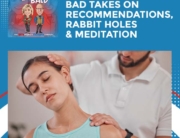
Dr. Frederick Schurger and Dr. Beth Bagley had patients this week that didn’t need steroid shots for their aches & pains after their atlas was adjusted. They discuss the strengths of the Blair Upper Cervical work. Many Upper Cervical chiropractors do not adjust segments in the middle of the neck, but Dr. Frederick Schurger and Dr. Beth Bagley do. They also have a bit of business talk because they are running a business & need to keep the lights on. Finally, they gave a quick overview of the Upper Cervical safety study that shows how safe this work is, as well as the level of satisfaction of the patients. Dive into today’s conversation with Dr. Frederick Schurger and Dr. Beth Bagley!
Watch the episode here
Listen to the podcast here
Upper Cervical Safety Study: An Overview Of The Medical And Business Perspective Of Upper Cervical Care
We’re having a good time. The show is getting out there. People are reading, and we appreciate everyone for signing up on the socials. Make sure that you like and subscribe.
It helps us so much.
Give us a five-star review, bits and pieces that get people to know about these things because there are so many problems in the world that can be solved by moving a little 2-ounce bone underneath your head. We’re going to start with a couple of patient testimonials. First, I talked about this one where he’s been reluctant to come in as a patient for about five years that his wife has been coming in. He’s an engineer. He’s very mechanical and methodical. Except when it comes to his health, he’s like, “No. That’s fine. I’ve had fusions. I’m good. I don’t need it anymore.”
One time, he came in, bent over, ready to get a bunch of steroid shots. He comes in again. They get here a little bit early because they got to get back home for a class. While he’s here, he gets a call from the hospital saying, “We need to reschedule you. You had a 2:00 appointment.” It was about 2:30 when they walked into my door, and this was for the shots.
His wife is like, “You’re not going to get those shots.” He’s like, “I don’t think so.” He was holding his adjustment. He’s like, “I’m feeling pretty good, doing the exercises that I’m supposed to be doing.” I’m not saying that there’s no time and place for steroid shots. There is, but quite honestly, I’m very excited that he was doing great and considering not needing them, at least at this time.
I’ve got a similar story. This lady started coming in. She was a referral from another patient. It’s the typical back pain, neck pain, some neurological things going on in her head and neck, and some pretty intense knee pain. It’s always funny because, in my opinion, that’s how the body prioritizes things that get well fast. We don’t have control over it. As doctors, we would love control over it, but we do not have control over it.
She’s doing well. She was holding her C2 adjustment. She needed a lower one, but last time, she told me something all of a sudden after the first adjustment. She thought it was a fluke, so she didn’t even say it after the first one. Her knee pain went away, and she was waiting for it to come back. It hasn’t come back. She’s also canceling steroid shots for her knee, and I thought that was amazing.
It’s fantastic to hear that. For the medical doctor out there who does all the shots, and that’s your bread and butter, I’m sorry, we won’t take them all, believe me.
We won’t. There are some patients that might need it to help them to survive. We get it.
I heard the craziest thing from one of my long-term patients. She’s been with me for a while. Her knee has been giving her grief. She got some shots to get a little bit longer. Her mother, who was suffering from Alzheimer’s, had passed away. She’d been a caregiver for her, so she’s able to take care of herself and get this surgery. She knew she’d be laid up if her mom was still around, so she finally did that. The shots helped keep her moving so she could take care of her mom.
I’ve never heard this phrase used clinically, but she had end-stage osteoarthritis. I’ve never heard of that, but he says, “We needed to do this surgery and take care of this knee for you because that’s how bad it was.” I don’t know what end-stage arthritis is, but that sounds bad. Anything longer than that sounds like a fusion.
Where does it go after the end stage? It’s not death. You hear end-stage cancer. One of my patients jokes because he doesn’t have back pain anymore. He used to say he had stage five back cancer when his back hurt. He’s a little dramatic.
That’s a little bit over the top. I would concur. In getting onto our next topic, I have another patient who was hurting so badly. We got back from a trip down to Little Rock, Arkansas. His wife’s like, “David needs to get in badly.” I’m like, “Okay.” I’d seen him a couple of times. He had something land on his head at a job site. He comes in, and sure enough, his atlas and C3 were out of place. Only a week earlier do I take new pictures of him, and I find that C3 is out of place, so we adjust that. He was back holding his adjustment for the first time in a very long time. He’s then out. Atlas and C3 were fixed. They’re back and he’s holding again. It’s working in the right direction.
I’m going to write up a paper. You and I might have to do this jointly because if you’ve got enough cases, it’ll be a case series, is what I’m thinking. One of the things that we do differently in the Blair work than other upper cervical docs do is we focus not only on the atlas. It’s two parts. We look at the atlas and the lower cervical as individual pieces. Not only are we addressing these pieces a little bit differently than some of the other orthogonal upper cervical techniques do. They do address them, but it’s not in the same fashion. We look at them individually and anatomically differently than those other techniques do. Sometimes that’s the missing link for the patient to get better.
I often see C3 and sometimes C5 as randomly one of the ones that could be holding someone back. Three different patients who don’t normally have a C2 or C3 misalignment. It could be C2 or C3, but they all were coming in, and it was hard for them to turn their head. When they turned it, they would get the stabbing pain in, I call it the spot, which is right where the trap sits. It’s pretty much right between the shoulder and the neck, towards the back but above the shoulder blade. Not that I like when people are hurting ever, but I like to adjust that one because it’s so quick. It’s not all the time that it’s quick. Sometimes it takes 1 day or 2, but at least the range of motion change is pretty quick where they can turn their heads again and they’re like, “I think you got it.” I was like, “I know.”
The first time that I had my C2 go out was right after my sister’s wedding. I’ve told this story before. My brother and I were not horsing around. We were just going down to the pond to go swimming. It was not even a crazy dive. It was very controlled. I swam in high school, so my form is okay. I don’t swim a whole lot anymore. I’m doing a very easy breaststroke over to the sandbar. I come on up and I’m locked up as if someone took a screwdriver between my shoulder blades. That was uncomfortable. It took me a month before I had an old-time doc say, “This number two here, let me get that for you.” That changed my perspective on all of this.
It’s funny because Dr. Drew Hall, who’s down in Sarasota, Florida, sent a patient my way who winters down there but she happens to live in Springfield. She’s like, “My number twos need to go back into place.” She’d been to upper cervical care under a different upper cervical technique, one of the orthospinology folks here in town. It worked, but it didn’t take it to the next level or the last step that she needed to get her well and keep her well. It’s so curious how these people fall into our laps for better or worse.
I do think in a perfect world that the body is working exactly like it’s supposed to be and then there’s an atlas subluxation. When we move atlas in a perfect world from top to bottom, everything is restored. I meet a lot of people who don’t live in the perfect world.

I live in that perfect world, and I have yet to figure out what that absolute place is. It is a real trick to address these things. In the perfect world and the world that was years ago, we did not have nearly the severity of injuries and accidents that we have available to us. We have a smorgasbord of ways to hurt ourselves. The thought in my head, going back to talking about whiplash and concussions, is that we get this weird buckling of the joints along the way where one will go one direction forward, and the other one will go backward. It goes through this back and forth, forward and backward, which means left to right.
Ideally, in a simple injury situation, everything is going to go either to the right or to the left. You’re going to be cocked around like this, as opposed to some weird back and forth that causes things to buckle in odd places. That’s more of what we’re dealing with, modern injuries and accidents. Gay for modernity.
When we talk about modern injuries and accidents, maybe it’s even longer than 40 or 50 years. In high-speed collisions, a couple of things that are going better is that we used to have the seat belts, and then the seat ended here. People’s heads would whip all the way back over the seat. We’ve got a headrest. People sometimes think headrests are there for comfort. No, they’re here to stop your head from whipping back. You can still get a whiplash even with them, but it’s better. That’s the other thing, making sure your headrest is up high enough above your head.
People sometimes think headrests are there for comfort. They’re here to stop your head from whipping back.
You and I have a problem because even in larger trucks and vehicles, it still only gets to maybe right at the back part.
If you’re tall, you need it as far up as it goes because it’s not for your comfort. It’s to stop your head from whipping over it. The tendency is that if you get hit hard enough, you’ll lift in your seat and still go somewhat back. Do your best to make sure it’s high enough.
The other thing to think about is the way cars are built now compared to many years ago. This goes back to my time in automotive plants and engineering. We used to have bumpers on cars. We don’t have bumpers on cars anymore. Everything is that plastic fascia. It is foam-filled. There is a piece of foam back there, or behind that you never see. You won’t see that piece of foam if you’re in an accident. They’ll see it at the auto body shop. That piece of foam if they pull that off and it disintegrates, which is what it’s supposed to do, they have to replace that piece of foam before they put your car back together.
With an old-style bumper, there was a cylinder that also needed to be replaced. It was designed to explode. You would hit, and that cylinder would pop out of place to deflect the energy that was coming into the spot, except those things were expensive to replace. That’s why they got rid of them because there’s got to be a more cost-effective way for a collision.
At what cost? It’s not the cost of fixing the car. It’s the cost of damage to the tissue in your body, which is why we see these more problematic. There are lots of concerns and things. Consequently, we’ve seen more reverse curves. Instead of seeing that nice C-shaped curve, we see an S-shaped curve because you’ve got this back-and-forth motion.
Your neck is supposed to have, I call it, a banana. The circular part of the banana faces forward. That’s what it’s supposed to do. When it happens, it straightens out, so we need it curved. My goal for anyone isn’t to get the curve back. There are some chiropractic techniques whose goal is the curve back. I want structural integrity, and I want your body to be functioning as good as possible. If it’s with a curve, your body will do it. If it’s without a curve, I’m okay with that too. I do like seeing curves. It’s great, but I’m not going to force a curve to come into somebody’s body.
This comes back to those lower cervicals that need to be addressed, sometimes individually. Sometimes the atlas will bring that all together, and the curve comes back overnight. I’ve seen a negative forward positioning reverse back to a normal curve in young children and some adults. People that have been in car accidents, we’re going to be working on that forever, trying to get those joints to work back to where they’re supposed to be.
Speaking of injuries that I’m seeing from things, I’ve noticed some interesting ones. In spring, there are gardening injuries, about twelve of those. People are overdoing it in the garden, coming in and annihilating either back, neck, or both. The other thing is pickleball. Do you guys have pickleball there?
They do. I have yet to play. I have several patients who swear by it.
They love it. It will keep us in business. Guys, keep playing pickleball when you are a little old. You maybe haven’t worked out in a long time, you go play pickleball and you give it your all. I’m laughing with them because they know they’re doing it to themselves. We are seeing some pickleball injuries. I’ve only seen it played. I’ve never played it either, but it looks fun.
It’s with any of these sports and anyone getting back into activity. It’s not that we had a long winter. We had a very short and mild winter and a long pollen season. We’re coming right into summer 2023. Thankfully, we’re getting a couple of reprieve days with the rain in the cold. It is coming right on in, and it’s going to be a hot one.
I want to talk about being a business owner. I have this thought process. There might be some people out there who are maybe thinking about being chiropractors or being in the service industry. I have a couple of things that come to my mind about when you’re renting a location because you rent also. I rent in a location that’s right next to a sushi restaurant on one side and a dry cleaner on the other side, but they don’t do actual dry cleaning either. That’s just a place where they take it out, dry clean, and bring it back. I don’t want dry cleaners right next to me because there are lots of chemicals. It’s a place for people to pick up and drop off.
That’s why they’ve done it in this fashion because the EPA rules are probably so ridiculous that they said, “We have one large warehouse building that we have to worry about, and these are the drop-off places.” I am so amazed at how fast they do all of that. I will drop off stuff because I’ve got a place like that down the road. I know they do the same thing. Yet, I’ve got my dry cleaning back in the afternoon if I drop it off by the right time. They’re very fast.
The last thing is, right next to them is Subway, which is one of the healthiest places you can eat. No, I’m being facetious. Everyone knows what the smell of Subway is. If you’re going through an airport, you know there’s a Subway coming up. Like a Cinnabon, you know what Subway smells like. You walk into Subway, and you’re like, “Definitely Subway.”
What happens when Subway’s fan breaks? Do you know what else smells like Subway? My office. Every time they’re baking bread, it smells like Subway in here. It’s not good. I could tell when they were baking the cookies. I even knew when they were cutting the onions. Their fan just got fixed. That’s why it’s at the top of my mind.
What I wanted to talk about is why all of these tiny things matter when you’re starting a business seems so overwhelming. What’s cool is that you deal with the stuff when it comes up. If somebody out there is wanting to start a business, know that you don’t have to figure all of it out all at once. That’s overwhelming when you try to think of it like that, but it’s one step at a time. That’s the same thing as building chiropractic practices. You meet one patient at a time. We change the lives of these people one at a time. What’s so cool is that’s how any service-type business, whether you’re a CPA, works. We have the coolest job, though, out of all of them.
Equivocal, I’m finally fed up with my EHR system or Electronics Health Records.
That’s the computers that the doctor would use to take the records and the servers.
All my nurses, billing stuff, and talking back and forth with patients, I haven’t liked it for a while. I finally said, “I’m motivated. I’m going to make this stuff happen.” To your point, there’s going to be a lot of work. It’s going to take a while for me to get everything put together, and it switched. However, it’s a pain point of understanding that you don’t have to know how to do everything right off the bat. You don’t have to do everything immediately.
It’s funny because I talked to another colleague of ours. She doesn’t do a cervical, but she’s a patient. She was making the same comment. She’s like, “I’m done with that company.” She’s got this same billing stuff system I’ve got. We’re both going to the same new system because we’re like, “We’re tired of this. We’ve heard so many good things about the other system. It’s time.” Sometimes you say, “I’m going to do a little bit today, a little bit tomorrow, and the next day.” Before you know it, it’s done.
This applies to not just business but everything in life. The best time to plant a tree was years ago. The next best time is now. If there’s a thing to be done, you’ve got to start chiseling away at it, especially if it’s giving you pain points that are preventing you or your staff. In my case, my spouse. My wife helps me out with some of the billing. I see her spreading over this thing every month that she has to do pretty much by hand. She’s got a system down.

If I can hit a button, it automatically emails to the patient. I don’t have to worry about the printing. We may still print for some but I don’t have to do all the extra work for it. The Amish people would be the exception because they don’t have insurance. That would be the difference there. It’s all the little things, and it’s getting under care. I don’t want to start because once I start, I’m not going to stop.
I’m afraid to meet a new doctor because you’ve had bad experiences with doctors in the past.
I had a potential patient come in here. He’s like, “Doc, you’re doing all the right things.” He saw how I was dressed. He says, “I like how you’re dressed. I like the way you talk and say things. I don’t want to pay for a new exam in X-ray.” Anywhere between the $300 to $500 range is a very common price for a new exam in X-ray in an upper cervical office. That’s a price tag. You’re paying for the expertise, and he wasn’t comfortable with that.
That’s a lot of work.
It is. We make it look effortless, mind you. We put a lot of work and effort into making sure we figure out exactly how each segment’s built, how they are out of place, how we’re going to put them back into place, and knowing what not to touch too to understand that about a patient. He’s like, “Doc, I’ve been under care forever. I like what you’re doing. You’re in that Palmer Method family. That might mean something different.”
He wasn’t comfortable with what I was recommending to start. I said, “I’ve got somebody for you. If you don’t like him and you don’t get better with him, he is going to send you right back over here because he understands what I do and how it’s different.” These are all the little pieces, but you got to start and figure out, “Is this the right path?”
Valuing yourself too. If the transmission in your car goes out and you need your car to get to work, you’re going to pay $2,000 and find a way to pay it. It sucks. I wish you didn’t have to spend it, but you’re going to find a way because you value your car to get to work. How much more important is your body than your car? Infinitely. I do think insurance has ruined a lot of people. People think insurance should pay for everything. I wish it did. That would be amazing, but it doesn’t, especially doctors, not just upper cervical doctors.
Medical doctors are getting out of the game.
Tons of doctors are, and because the insurance companies are only out for themselves and not out for you, the consumer. Value yourself as much as you do a car transmission. If you needed a tooth taken out and you’re not going to have dental insurance that pays for that fake implant, that’s another $3,000 right there. You want to smile and not have people stare at you, so you’re going to pay that $3,000 for an implant. Could you survive without it? Absolutely. You could survive without your car.
I’m going to tell you, if your nervous system and body are breaking down, you’re going to be so much happier that you spent that money now versus waiting when it’s time for surgery. You’re never the same after surgery. It’s never exactly what you want it to be. It might be better than where you are right this moment, but it doesn’t get you well. It cuts out the pieces that are broken.
You don’t need a car. You can get around on the bus system or you can bike, but what is your quality of life? What are you capable of doing or not? Somebody came in and said, “Doc, I hate it when I can’t think straight. Get my head on straight.” That’s what we did. It’s funny because we’re close in price tags as far as our rates. It might be somewhere in that $2,000 to $2,500 for an initial plan of care to make sure you’re stable, and then it’s less. Maintain that.
The initial phase of care for anything, hopefully, most chiropractic offices, but mine and yours are more expensive. Honestly, once I hear about what people are spending on dental care, I keep going, “I need to raise my prices.” I’m not going to do it based on that. I want the care that I’m offering to people to be accessible to lots of people but I also need to keep the lights on in my office.
We have our expenses and bills. We won’t talk about inflation because I don’t understand that.
It’s bad. That’s what hurts me because people’s paychecks aren’t going up, but all the prices are going up. I haven’t raised my prices yet, but I probably should.
Let’s ask two questions. 1) Is upper cervical care better than regular chiropractic care? I’ve got a study for this. 2) Are there any risks associated with upper cervical? Let’s hit this research paper and then wrap it up.
I’m going to answer because you’re looking that up. Do I think upper cervical care is better? It’s different. I almost put it on a different level than chiropractic care. Conventional chiropractic care, although amazing, and some of my best friends in the whole world are conventional chiropractors. They know what I do. I don’t want to call upper cervical chiropractic, chiropractic. It is chiropractic, I know but it’s different.
It is a different step of what chiropractic was developing, and it still is one of the more advanced ways to address the human frame and the anatomy of our body. Let’s go through this study real quick. What are the risks of chiropractic? Back in 2011, Dr. Kirk Erickson and a couple of others did this study, where they collected data from over 1,000 patients. We had 88 doctors or so in this study.
It’s a pretty large study considering upper cervical as a smaller community. I do get this question from people. “Can chiropractic cause a stroke? Can this hurt me?” I love answering it because there are multiples but this study especially.
This study, in particular, drives this home because the first step here is we’ve got the symptomatic reactions being either intense or serious. What do these mean? A symptomatic reaction is a new symptom or a worsening of an existing symptom by more than 30% following UCCC as an upper cervical adjustment. They defined intense as anything above eight. Anything that was a serious adverse event is a life-threatening reaction or hospitalization.
An asymptomatic reaction is a new symptom or a worsening of an existing symptom by more than 30% following UCCC as an upper cervical adjustment.
We had 83 doctors in this study and over 1,000 cases. This was only upper cervical. Most of these were atlas or axis combined. We had 338 patients out of the 1,000 that met that symptomatic reaction. That had an increase. Only 5% of 56 patients had an intense change. In earlier studies that were done by Rubenstein, he used adverse events. This was general chiropractic that most people are familiar with. Unfortunately, I’m going to use the term “rack them, crack them.” They would’ve had a 56% compared to 13%.
You can get sometimes really sore, especially after the first upper cervical adjustment. We explained that to a patient. I get excited when you get sore because I know your body is responding. It’s awesome.
The difference is 31% had a change for the increase in pain and discomfort, whereas most people think.
It’s diversified from what you see on TikTok and YouTube.
That was at 56%. Half of that population had that.
That’s a lot. I wouldn’t have thought about that.
For the intense, the over 8, they would’ve had almost 3 times. Fit 13% versus 5%, which is no serious adverse events occurred in all these 1,000 patients. Of the 83 doctors, many who had been practicing for 20, 30, 40, or 50 years have over 5 million career adjustments without ever having a serious adverse event. Not to say that it can’t happen or will never happen, but that’s a lot of doctors, patients, and adjustments. Here’s the upside. We don’t tend to adjust every time you come on in. We can spread those visits out further. If there is a risk, however small, it is even smaller when we don’t need to do it as much.
One of the risks when people talk about stroke and chiropractic is when the doctors or chiropractors twist the neck. There is an artery called the vertebral artery that has the potential that usually the patient already has an event in progress and has neck pain because of it. The doctor twists their neck and makes it worse, which is not great. A stroke can occur, and it’s awful. We never ever want anything like that to happen. What’s cool about almost all of the upper cervical techniques that are done is there is no twisting of the neck. Even if somebody did have an event in progress, God forbid, this wouldn’t make it worse. Hopefully, we would see the warning signs and send them to the ER.
For the symptoms, the common reactions that people were having, tiredness or fatigue, was the highest. It’s the radiating pain or shooting pain. Neck pain was up there at 5%. Dizziness was under 5%. I see that one more commonly because what’s happening is we’re increasing blood flow to the brain. All that’s happening. That could be part of the headache as well associated with dehydration.
I see tiredness or fatigue of more than 10% after the first adjustment. We worry people about it. Maybe they don’t complain about it or they just go to sleep. I also hear people having the best night’s sleep of their lives for their first adjustment. I love that.
That is very common. Patient satisfaction in this survey was 91%. In the same Rubenstein study, they had a smaller group but still a large and good group of 77%.
That’s still fantastic. That’s why I’m saying these doctors are doing good work. First of all, if you’ve read the previous episodes, we’ve had personal experiences with why we chose this. When people come into the office, if they have a subluxation or a misalignment that is causing nervous distress, I expect them to get well. I am surprised if they’re not getting well, and I’m trying to figure out why.
I’ve got one who’s not responding as well as possible. We’re coming to that point where she’s still having problems. I changed some stuff up and we’re going to see where she’s at. She’s like, “We’ve been doing this for 3 or 4 months, doc. I’m still not seeing stuff.” I’m like, “No. We’ve got to reevaluate stuff.” I might say, “We’re going to take the month of June off. You go play a bunch of golf. Come back in July and then we’re going to double-check stuff. I want to see how you’re doing.” She plays golf, maybe newer to golf but maybe she’ll notice that her golf game gets worse. There’s something else that has crept back in because sometimes the change is so subtle and gradual that you don’t even notice it.
Sometimes it’s like a switch. More likely, it’s a subtle change over time. When we reevaluate and we’re like, “You had this,” they’re like, “I forgot I had that.” I love when you forget about it. That’s great.
I’ve got this last table here that we’re going to go over very briefly. Most of these people were coming in with some neck pain dysfunction. A good number two, almost coming right in behind it was low back pain. We see good results with that. Number three was headaches. Some mid-back pain and some upper or lower arms and legs. Fibromyalgia was a small component. This was general. As patients walk into the office, they present it.
Most patients are going to have neck pain and back pain.
That’s what’s drawing people into any chiropractic office though, but we do see a lot of fibromyalgia. This equilibrium would be a balance of your type of things like vertigo. TMJ is common.
We see a lot of those.
Facial pain would be that trigeminal neuralgia we talked about a couple of episodes ago. We’ll talk about the blood pressure study at another time. I want to find the second follow-up study. A couple of other things. Only six people came in for wellness care probably because they were a family member of another patient. In any case, that is what that is. It’s great to know that not 91% of patients were happy in this study.
They’re highly satisfied with their chiropractic care in an upper cervical office. That’s what we feel. We feel the love. We love the love. It’s incredible. Whoever’s reading out there, I want that for you. Find an upper cervical doctor and get checked. Worst-case scenario, they’ll check you and say you’re fine. What if there is something going on? You can live a healthier and better life by getting your neck checked. Do it. Invest in yourself. You are more important than a transmission.
You can live a healthier and better life by getting your neck checked. Do it and invest in yourself. You are more important than a transmission.
That will wrap it up for this episode. That’s a better place than we did where we went depressing. Dr. Bagley, where can they find you?
You can find me in St. Louis, Missouri. We’re on the Westside. We are at PrecisionChiropracticSTL.com.
I am in Springfield, Illinois at KeystoneChiroSPI.com. You can find us on all the socials. Search for that.
Click around, and you’ll find us.
That is it. Make sure you like, subscribe, and share with your friends. Maybe they’ll read this and be like, “I need to go find one of these upper cervical doctors.” If you’re not in our locales, let us know, and we will help you find somebody in your locale.
We’re happy to.
Have a wonderful evening, day, or night. We will see you for another episode of the show.
Take care.
Important Links
- PrecisionChiropracticSTL.com
- KeystoneChiroSPI.com
- https://Linktr.ee/TheBlondeAndTheBald
- https://BMCMusculoskeletDisord.BioMedCentral.com/articles/10.1186/1471-2474-12-219





